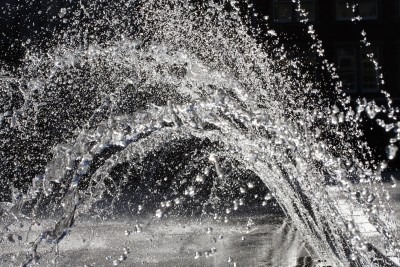Female Ejaculation: Fact Or Fiction?
June 21, 2013 by Justin Lehmiller
In my experience as a sex educator, the female orgasm has generated far more questions than any other topic. “Why do some women have an easier time reaching orgasm than others?” “Can women really achieve multiple orgasms?” “What’s the best sexual position for making a woman orgasm?” These are just a few of the many such questions I have previously answered on the blog. However, one question that I have not yet thoroughly addressed is whether female ejaculation (i.e., an expulsion of fluid during a woman’s orgasm) can actually happen. Many people seem to think that this is nothing but an urban legend, so let’s take a moment to set the record straight.
Female ejaculation is indeed real and people have known about it for centuries. In fact, we have written documentation of its existence dating back to Aristotle and Galen!1 However, the ancient Greeks and Romans were hardly the only ones who talked about female ejaculation. The subject is addressed in many Chinese Taoist writings dating back to the 4th century, and is also mentioned in most versions of the Kama Sutra. As a result, in a recent journal article entitled The History of Female Ejaculation, the authors concluded that this phenomenon has been “discovered, described, and forgotten in eastern and western culture repeatedly over the last 2,000 years.” [1]
So why does female ejaculation (known colloquially as “squirting”) sometimes occur? Scientists do not agree on the answer, but many point to the so-called “female prostate” (i.e., the Skene’s glands) as the source. Technically, only men have a prostate gland; however, women have some prostate-like tissue that surrounds the urethra, and this is theorized to be the source of the fluid. It was once thought that female ejaculate was simply urine because such a significant amount is often expelled from the body (in fact, it is sometimes measured in cups instead of teaspoons). However, scientific testing has found that female ejaculate has a different chemical composition than urine and is actually quite similar to male ejaculate (with the exception of sperm, of course) [1].
That said, not all women experience ejaculation, and among those who do, it typically only happens during stimulation of the supposed G-spot. I say “supposed” because scientists do not agree whether the G-spot is a distinct anatomic site or if it simply represents the internal portion of the clitoris. Either way, stimulation of that general area (i.e., the front wall of the vagina, just a few inches in from the entry) tends to produce the highest likelihood of ejaculation.
As you can see, although there remains a lot of scientific debate over the mechanisms behind female ejaculation, there is absolutely no doubt that it exists.
Want to learn more about The Psychology of Human Sexuality? Click here for a complete list of articles or like the Facebook page to get articles delivered to your newsfeed.
[1] Korda, J. B., Goldstein, S. W., & Sommer, F. (2010). Sexual medicine history: The history of female ejaculation. The Journal of Sexual Medicine, 7, 1965-1975. doi:10.1111/j.1743-6109.2010.01720.
Image Source: 123rf.com
You Might Also Like:

Dr. Justin Lehmiller
Founder & Owner of Sex and PsychologyDr. Justin Lehmiller is a social psychologist and Research Fellow at The Kinsey Institute. He runs the Sex and Psychology blog and podcast and is author of the popular book Tell Me What You Want. Dr. Lehmiller is an award-winning educator, and a prolific researcher who has published more than 50 academic works.
Read full bio >


